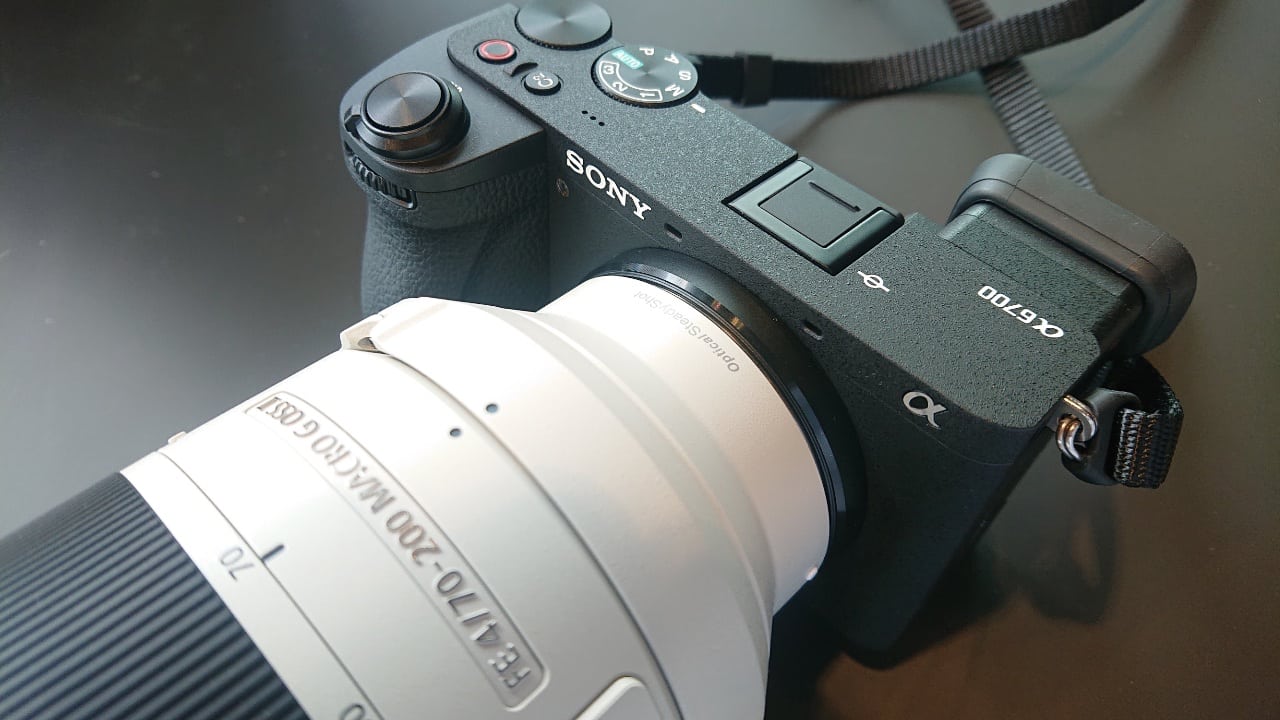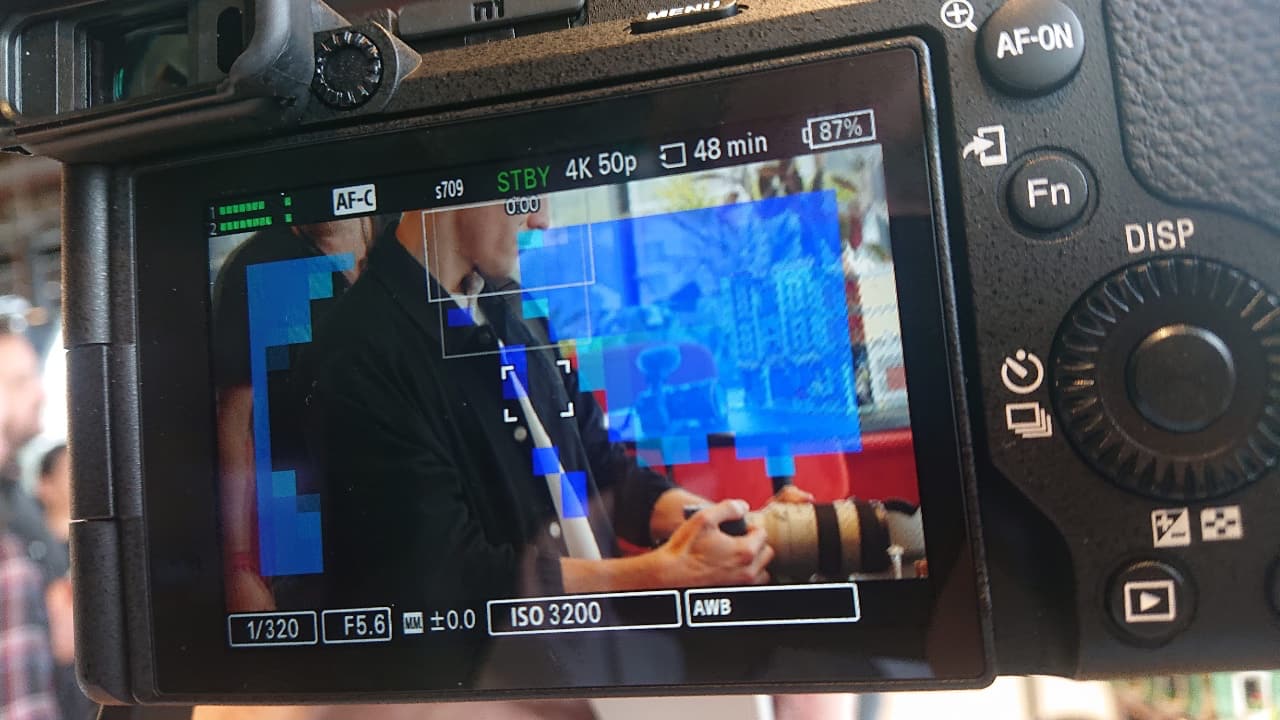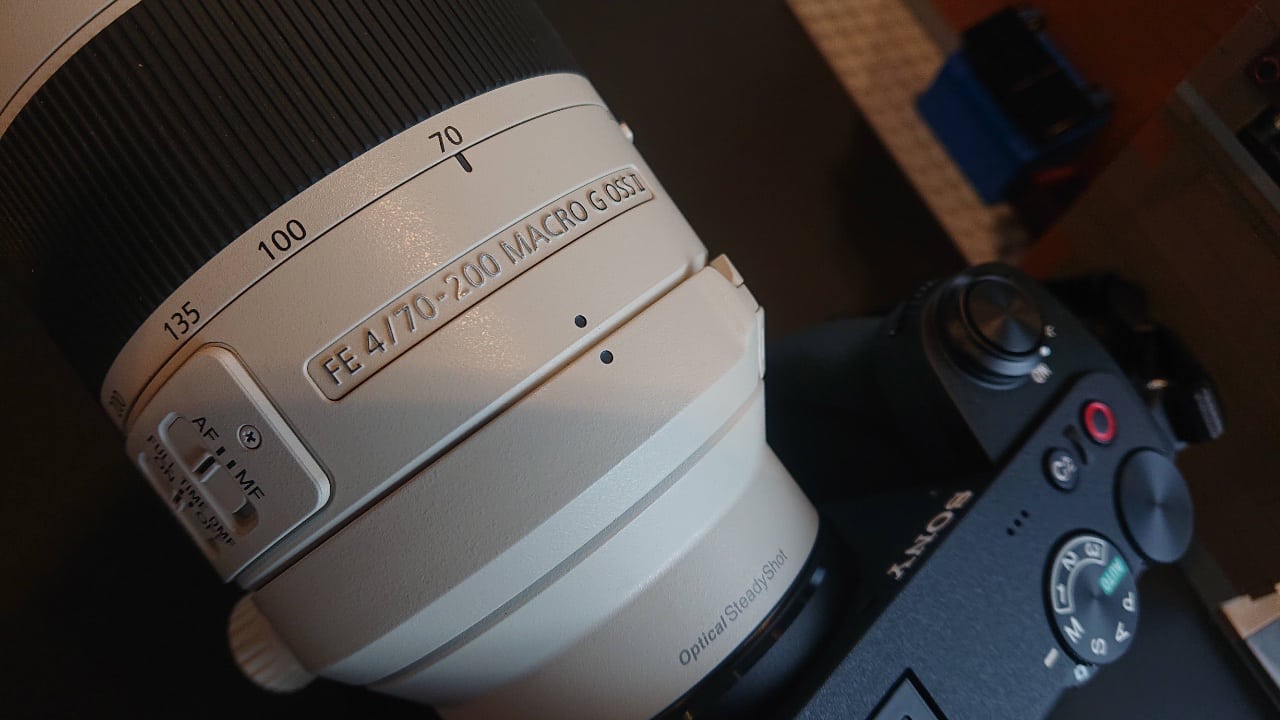
Sony held a press event in London to allow journalists to get up close and personal with the new α6700 APS-C mirrorless camera. Phil Rhodes came back with positive impressions...
Watching material from a practically pocket-sized mirrorless camera projected on a cinema screen is often a sobering experience, and not because the pictures are bad. Sony’s decision to run a launch event for its upcoming α6700 at the London offices of the company’s motion picture division gave it access to a screening room at which it gleefully did just that. So, much as this is a stills camera that will shoot video as opposed to a video camera, did the α6700 manage to produce footage that looked like a real movie?
Well, of course it did, even played back from a laptop. Most of them do, and that’s why this is a very, very competitive market. Okay, we might perhaps zoom way, way in and look at the way the very peak of a sunset transitioned from orange to white, but that’s the sort of micro-problem which is really only fixed in cameras which cost a dozen times more. So no, the considerations attending modern cameras are not picture quality and haven’t been for years, notwithstanding the ability to maintain that picture quality at the extremes of the performance envelope.
The α6700 has a new 27-ish-megapixel sensor which gives it a raw image roughly 6K by 4K to play with, which is more than enough to suitably oversample excellent UHD video. Various sources described the camera as capable of shooting up to 120 frames in UHD, although that does require cropping into the sensor. It’ll shoot its entire APS-C area at up to 60 frames, though artefacts of that scaling are hard to evaluate without a bench test.
First impressions
Combining an APS-C sensor with a lens mount capable of covering full-frame sensors creates a camera that sits neatly between super-compact competitors with micro four-thirds mounts, and the full-frame sensor of something like the A7 series. As such, if it’s possible for anything to be decidedly midrange, the 6700 is. To people used to GoPros, it’ll come off as chunky, though in comparison to an A7s Mk. III the 6700 is a relatively lightweight option. Otherwise, controls are centred around a conventional set of three wheels and a mode selector. Full-frame-compatible lenses will be be heavier and more expensive but also more future-proof; of course, with such a shallow mount, it’s mechanically possible to use more or less lens ever made, though it’ll be easy to miss the autofocus features with non-E mount options.
In video mode there’s actually rather more variety of ISO settings available than we’d expect – quite often, Sony video cameras will only shoot S-Log at a very limited range of ISOs. At the low end, it actually doesn’t start underlining the settings, which is Sony’s way of indicating they’re mathematically emulated, until ISO 640. High sensitivity modes are certainly in the thousands though the maximum realistically usable numbers are something we’ll comment on when we’ve had one on test for a bit.

Promotional materials like to make connections to the company’s cinema line, and we can safely assume that Sony, which makes all of its own sensors (and quite a lot of other people’s), is cross-pollinating its sensor tech as much as possible. Something that certainly hasn’t come from Venice, though, is the α6700’s improved selection of phase-detection autofocus regions (759, up from 425 on the previous model). Film and TV has become gradually aware that modern autofocus can actually work well enough to be useful, and while Sony hasn’t necessarily been the most prominent name in that field, the company makes both sensors and lenses and has therefore been well-placed to keep up with the Canons.
In general the autofocus seems eager to please, scattering indications across the viewfinder as it enthusiastically reaches for sharps on subjects according to the camera’s AI-based subject recognition algorithm. It seems better than average when tracking people who might be inconsiderate enough to look around or even turn their backs, though there is inevitably some room for error. The α6700 also boasts a new feature, inherited from higher-end options, which visualises the output of all the phase-detection points as a coloured overlay on the viewfinder image. It’s useful in all kinds of ways, but people who shoot a lot of interviews will be keen on this from the perspective of being able to see when particularly expressive hand-talker’s hands might go soft.
The α6700’s menus include several settings intended to tame the autofocus in video mode, with either more or less speed and aggression in following subjects or allowing the point of interest to drift between subjects. That’s something that inevitably won’t always be perfect because deciding to focus on small foreground regions of interest is the sort of decisions electronics will sometimes botch, but the existence of all these options says something about Sony’s interest in making the AF usable in the widest possible variety of circumstances.
The lens which features in the accompanying photos, the (deep breath) FE 70-200mm F4 Macro G OSS II, is also new. It’s a little smaller and lighter than the first 70-200 Sony built for its own E mount, but still manages to pack in optical image stabilisation and speedier AF capabilities. The stabilisation is particularly noteworthy for moving-image people, since there are several OSS modes which aim to avoid, as much as possible, the fractional lagginess that can make following a chaotically moving subject tricky with traditional stabilisation techniques. Since the camera itself has “insect” as one of its AI focus targets, this seems worthwhile. It’s always difficult to characterise how successful this sort of thing is without spending more than a brief press event with the camera, but it’s good to see stabilisation lag being considered.

Price and performance
In the UK, the new Sony α6700 seems to be listing at around £1500 body only (currently around $1900), which makes it one of a few options in the Sony lineup for video people who’d prefer to avoid spending A7s money. A7s money currently means more than twice as much. There is some lens compatibility between the two, given the common mount. Certainly, where are fewer and fewer compromises associated with APS-C cameras, and the α6700 itself is remarkably compact considering that it can – given sufficiently potent SD cards – record 500-megabit, 10-bit UHD to intra-frame files.
As so often, given the excellence of many modern cameras in this class, details matter – details like the AF and stabilisation behaviours, which are new to this camera and lens combination, as well as basic necessities such as the quality of the codec. Those are difficult to characterise objectively at the best of times, but particularly given just a couple of hours with the camera at a press event. So, a full review beckons, which we’ll look into as soon as the company has a loaner available for a week or two.
Sony provided falafel and cake at the event. Phil ate them.
Tags: Production Featured Cameras


Comments